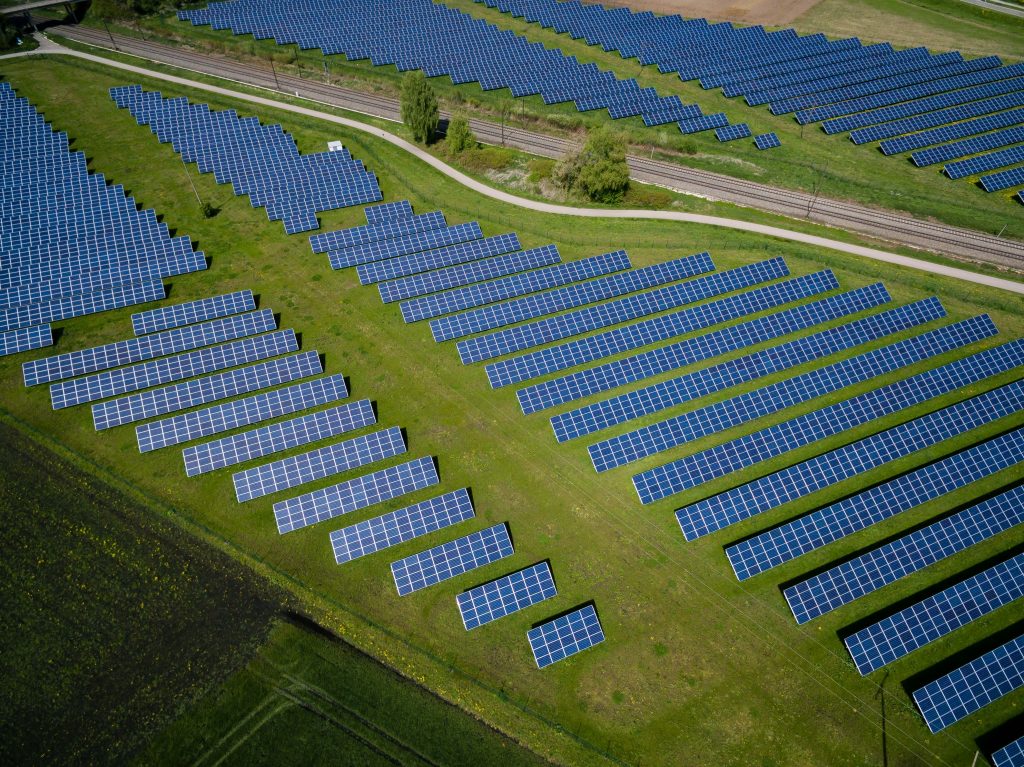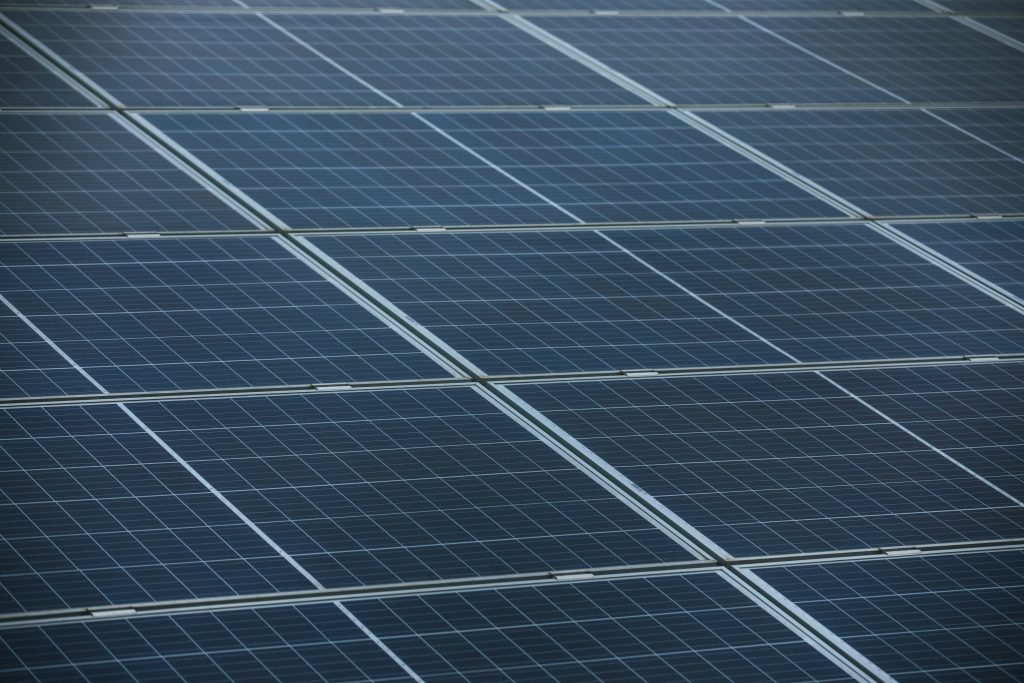How Does A Solar Generator Work
As an Amazon Associate, I earn from qualifying purchases, at no additional cost to you. Disclaimer
I always used to wonder how a solar generator worked, until I took the time to understand the intricate process behind harnessing the power of the sun. It’s truly fascinating how a seemingly simple device can convert sunlight into usable electricity. In this article, we will explore the inner workings of a solar generator and uncover the magic that allows it to bring sustainable energy to our homes and beyond. So, buckle up and get ready to be amazed by the wonders of Solar Power!
Understanding Solar Generators
The Basic Concept of Solar Generators
Solar generators harness the power of the sun to generate electricity without the need for traditional fuel sources. They are portable and eco-friendly, providing a sustainable and renewable energy solution. By utilizing photovoltaic (PV) technology, solar generators capture sunlight and convert it into usable electrical energy. This concept of converting solar energy into electricity is the primary foundation of solar generators.
Components of Solar Generators
Solar generators consist of several key components that work together to provide a reliable source of electricity. These components include solar panels, a battery, a charge controller, and an inverter. Each component plays a crucial role in the generation, storage, and distribution of solar energy. Understanding the purpose and function of these components is essential to comprehend how solar generators work effectively.
Types of Solar Generators
Solar generators come in various types to cater to different energy needs and requirements. The most common types include portable solar generators, solar power stations, and grid-tied solar systems. Portable solar generators are compact and designed for outdoor activities, camping, and emergency power backup. Solar power stations are larger and provide more power, making them suitable for homes, RVs, and small businesses. Grid-tied solar systems are connected to the main power grid, enabling users to sell excess energy back to the utility company.
The Core Working Mechanism of Solar Generators
Process of Converting Sunlight into Electricity
Solar generators utilize solar panels to convert sunlight into electricity through the photovoltaic effect. When sunlight hits the solar panels, it excites the electrons in the semiconductor material, generating a flow of direct current (DC) electricity. This DC electricity is then used to charge the battery or power devices directly.
Process of Storing Energy in Solar Generators
The battery within a solar generator plays a vital role in storing the generated electricity for later use. When the solar panels produce more electricity than is immediately needed, the excess energy is stored in the battery. This stored energy can be utilized during periods of low sunlight or at night. The charge controller regulates the energy flow, preventing overcharging and ensuring the longevity of the battery.

Key Components of a Solar Generator
Solar Panels
Solar panels are the heart of a solar generator. They consist of multiple photovoltaic cells that convert sunlight into electrical energy. These panels are typically made of silicon, which possesses the ability to generate electricity when exposed to sunlight. The size and wattage capacity of the solar panels determine the amount of electricity that can be generated.
Battery
The battery is responsible for storing the converted energy. It acts as a reservoir, allowing for the storage of excess energy generated by the solar panels. The capacity of the battery determines the amount of energy that can be stored and used during times of low or no sunlight. The type of battery used varies depending on the application, with common types including lead-acid, lithium-ion, and gel-cell batteries.
Charge Controller
The charge controller regulates the flow of electricity between the solar panels and the battery. It prevents overcharging of the battery, ensuring its longevity and efficient operation. Additionally, the charge controller optimizes the charging process and protects the battery from damage caused by inconsistent charging.
Inverter
The inverter is responsible for converting the direct current (DC) electricity stored in the battery into alternating current (AC) electricity, which is suitable for powering most household appliances and electronic devices. Inverters play a crucial role in providing usable power that can be utilized in homes and businesses. There are two main types of inverters: sine wave inverters and modified sine wave inverters. Sine wave inverters produce a clean and smooth form of AC power, while modified sine wave inverters produce a stepped waveform that may not be suitable for some sensitive devices.
The Role of Solar Panels
How Sunlight is Captured
Solar panels are composed of photovoltaic cells that absorb sunlight and convert it into electricity. These cells are made from semiconductor materials, such as silicon, which possess the property of releasing electrons when exposed to sunlight. The photons from sunlight energize the electrons, creating a flow of electricity.
Conversion of Sunlight into Electrical Energy
The absorption of sunlight by the solar panels triggers the photovoltaic effect, enabling the conversion of solar energy into electrical energy. The electrons that become energized by the sunlight are forced to flow through an external circuit, creating a flow of direct current (DC) electricity. This DC electricity can be used to charge the battery directly or power devices.
Factors Affecting the Efficiency of Solar Panels
Several factors can affect the efficiency of solar panels. The angle and orientation of the panels in relation to the sun greatly influence their ability to capture sunlight efficiently. Shading, dirt or debris on the panels, and temperature also impact their performance. It is essential to regularly clean and maintain the solar panels to maximize their potential power output.

The Role of the Battery
Storage of Converted Energy
The battery is a crucial component of a solar generator as it stores the converted energy for later use. During periods of excess energy production, the surplus electricity is stored in the battery to be utilized during times of low or no sunlight. The battery acts as a reservoir, ensuring a constant and reliable power supply.
Different Types of Batteries Used
Solar generators employ various types of batteries to store and discharge electrical energy efficiently. Lead-acid batteries are commonly used due to their low cost and ability to handle high currents. Lithium-ion batteries are becoming increasingly popular due to their higher energy density and longer lifespan. Gel-cell batteries are another option, providing a maintenance-free and deep-cycle battery solution.
Battery Maintenance and Lifespan
Proper battery maintenance is crucial for the longevity and optimal performance of a solar generator. Regular maintenance includes checking the battery voltage, maintaining proper charge levels, and ensuring proper ventilation. It is also important to avoid overcharging and deep discharging the battery, as these can significantly reduce its lifespan. By following the recommended guidelines and performing routine maintenance, the battery can provide reliable electricity storage for many years.
The Role of the Charge Controller
Regulating the Flow of Electricity
The charge controller acts as a gatekeeper, regulating the flow of electricity between the solar panels and the battery. It ensures that the battery is charged optimally and protects it from overcharging. By monitoring the voltage and current of the solar panels, the charge controller adjusts the charging process to maximize efficiency and prevent damage to the battery.
Prevention of Overcharging
Overcharging can have detrimental effects on the battery’s performance and lifespan. The charge controller prevents overcharging by monitoring the battery’s state of charge and adjusting the charging process accordingly. It acts as a failsafe, safeguarding the battery from damage caused by excessive charging and extending its overall lifespan.
Key Features to Consider in Charge Controllers
When choosing a charge controller for a solar generator, several key features should be considered. These include maximum input voltage, charge current capacity, temperature compensation, and load control capabilities. Additionally, the type of charge controller, such as pulse width modulation (PWM) or maximum power point tracking (MPPT), will affect its efficiency and overall performance.

The Role of the Inverter
Conversion of DC to AC Power
The inverter is responsible for converting the direct current (DC) electricity stored in the battery into alternating current (AC) electricity, which is suitable for powering most household appliances and electronics. This conversion enables the solar generator to provide usable power that can be utilized in homes, businesses, and various electronic devices.
Sine Wave Inverters versus Modified Sine Wave Inverters
There are two main types of inverters used in solar generators: sine wave inverters and modified sine wave inverters. Sine wave inverters produce a clean and smooth form of AC power, replicating the power supplied by the utility grid. On the other hand, modified sine wave inverters produce a stepped waveform, which may not be suitable for some sensitive devices. It is important to choose an inverter that is compatible with the appliances and electronics that will be powered.
Efficiency of Inverters in Solar Generators
The efficiency of the inverter affects the overall performance and power output of a solar generator. Higher efficiency inverters convert a larger percentage of the stored DC electricity into AC power, minimizing energy loss. It is advisable to select an inverter with high efficiency ratings to maximize the energy output and optimize the usage of the solar generator.
Understanding the Efficiency of Solar Generators
Factors Affecting Efficiency
Several factors impact the efficiency of solar generators. The size and wattage capacity of the solar panels determine the amount of sunlight that can be converted into electricity. The condition and cleanliness of the solar panels also play a role in their efficiency. The capacity and condition of the battery affect the amount of energy that can be stored and utilized. The type and efficiency of the charge controller and inverter also contribute to the overall efficiency of the solar generator.
Tips to Improve Efficiency
To improve the efficiency of a solar generator, proper maintenance is crucial. Keeping the solar panels clean, ensuring the battery is in good condition, and optimizing the charging process with a well-suited charge controller are essential steps. Additionally, monitoring and adjusting the usage of AC-powered devices can help conserve energy and optimize the overall efficiency of the solar generator.
Understanding Output and Input Power
Output power refers to the electrical energy that can be generated and utilized by a solar generator. It is determined by the size and capacity of the solar panels, the efficiency of the system components, and the condition of the battery. Input power is the amount of sunlight that the solar panels receive, which directly influences the output power. Understanding the relationship between input and output power is essential to gauge the performance and efficiency of a solar generator.

Limitations and Challenges with Solar Generators
Dependence on Weather
One of the primary limitations of solar generators is their dependence on sunlight. Cloudy days, reduced sunlight hours, and seasonal variations can significantly impact the amount of energy generated. While advancements in solar panel technology have improved their ability to generate electricity in low-light conditions, solar generators may not be suitable as the sole source of power in areas with limited sunlight.
Limitations in Energy Storage
The capacity of the battery within a solar generator dictates the amount of energy that can be stored. If the demand for electricity exceeds the storage capacity of the battery, it may be necessary to supplement the system with alternative power sources. Additionally, the lifespan of the battery gradually reduces over time, affecting the long-term storage and utilization of energy.
Limitations in Power Output
Solar generators have limitations in terms of the power they can output. The size and wattage capacity of the solar panels, along with the efficiency of the system components, determine the power output. Larger power requirements may necessitate the use of multiple solar generators or alternative power sources to meet the demand.
Innovations and Future Prospects for Solar Generators
Improvements in Solar Panel Technology
Advancements in solar panel technology continue to enhance the efficiency and performance of solar generators. Manufacturers are developing higher-efficiency solar panels that can generate electricity even in low-light conditions. Additionally, flexible and lightweight solar panels are being developed, making solar generators more portable and versatile.
Innovations in Energy Storage
Energy storage technology is constantly evolving, with new battery technologies emerging. Lithium-ion batteries are becoming more affordable and efficient, offering higher capacities and longer lifespans. Other advancements include flow batteries, which provide extended storage durations, and solid-state batteries, which offer increased safety and energy density. These innovations in energy storage present exciting possibilities for the future of solar generators.
Integration with Smart Grids and Homes
The integration of solar generators with smart grids and homes is an area of ongoing research and development. By integrating solar generators with smart grid systems, excess energy generated by solar panels can be fed back into the grid, further promoting clean and renewable energy. Smart homes equipped with advanced energy management systems can optimize the usage of solar-generated electricity, improving overall energy efficiency.
In conclusion, solar generators offer a sustainable and renewable energy solution by harnessing the power of the sun. Understanding their core working mechanism, key components, and efficiency factors is essential to maximize their potential. While limitations exist, ongoing innovations and future prospects hold tremendous promise for the continued advancement and utilization of solar generators. With advancements in solar panel technology, energy storage, and integration with smart grids and homes, solar generators are poised to play a significant role in the transition to a greener and more sustainable future.


